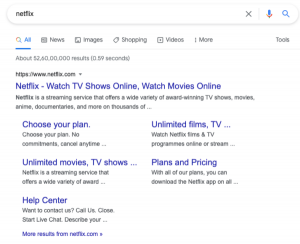— October 9, 2018

Free-Photos / Pixabay
There’s a reason we rethink our goals and make resolutions around the first of the year. It’s rare to remain in the same circumstances with the same goals over the course of a year—and the same is true about your business. Companies can’t survive without the flexibility to change; they have to adapt to market fluctuations, industry trends, financial restrictions and more. It’s highly doubtful the business you are running today looks the same as the business you planned for when you first opened your doors. So, when was the last time you took a look at your business plan?
Because business plans strategize and project for the future, you need to update your business plan at different points in the life of your company. Situations where an updated business plan can help you include:
- New competitors in the market threatening to take some of your business
- Changes in the economy affecting your ability to fulfill orders or your customers’ abilities to buy your product or service
- Influx of money enabling you to expand by hiring, adding to your product line/services or opening new locations
- Loss or gain of new vendors
- Changes in industry regulations or new government restrictions affecting your business
- A change in key personnel
- A change in marketing trends that opens up new opportunities
Take a quick look at the last version of your business plan. Does it reflect the company you’re running today? If not, now is a good time to dust off the cobwebs and give it a makeover. Here’s where to update:
The Executive Summary
It’s doubtful your plan’s executive summary still adequately describes the company you run today. Your summary should clearly describe your business objectives and why/how your business stands out from your competitors. Remember: This may be the only section potential investors pay attention to, so the executive summary should be brief, vivid, interesting, and (most important) an accurate portrayal of what your business does today.
Market Analysis
Your business has to change when your target market changes. No matter whether your target market is millennials, seniors or fickle tweens, buying habits and patterns change all the time. Your business plan needs to show how your business will address these shifts. If you have expanded to new markets, either demographic or geographic, your business plan should reflect this and include projections for where you’ll go next.
Financial Projections
If financial analysis is not your thing, I strongly advise you to go over this section with your CPA or money manager. He or she can review your revenues and expenses with you to pinpoint where your business is making—or losing—money, and create financial projections for the next few years. Most likely your working capital needs have changed since your original business plan was written. You might have higher labor costs or need new equipment or technology to stay competitive. Also, if you predict a surge in profits as the result of new products or services, make sure those projections are reflected in your updated business plan.
Your Staff
Investors, partners, bankers—actually anyone who looks at your business plan—all want to know who you have working on your team. Key personnel change all the time; the number of employees you have also says a lot about your business’s potential for growth. Include all support staff and project what roles you want to fill going forward to keep your business growing in the right direction.
Your company is a living, growing extension of your entrepreneurial dreams. Make sure your business plan reflects that by revisiting and revising it at least once a year—or more often if something occurs to change the course of your business.
Business & Finance Articles on Business 2 Community
(47)







